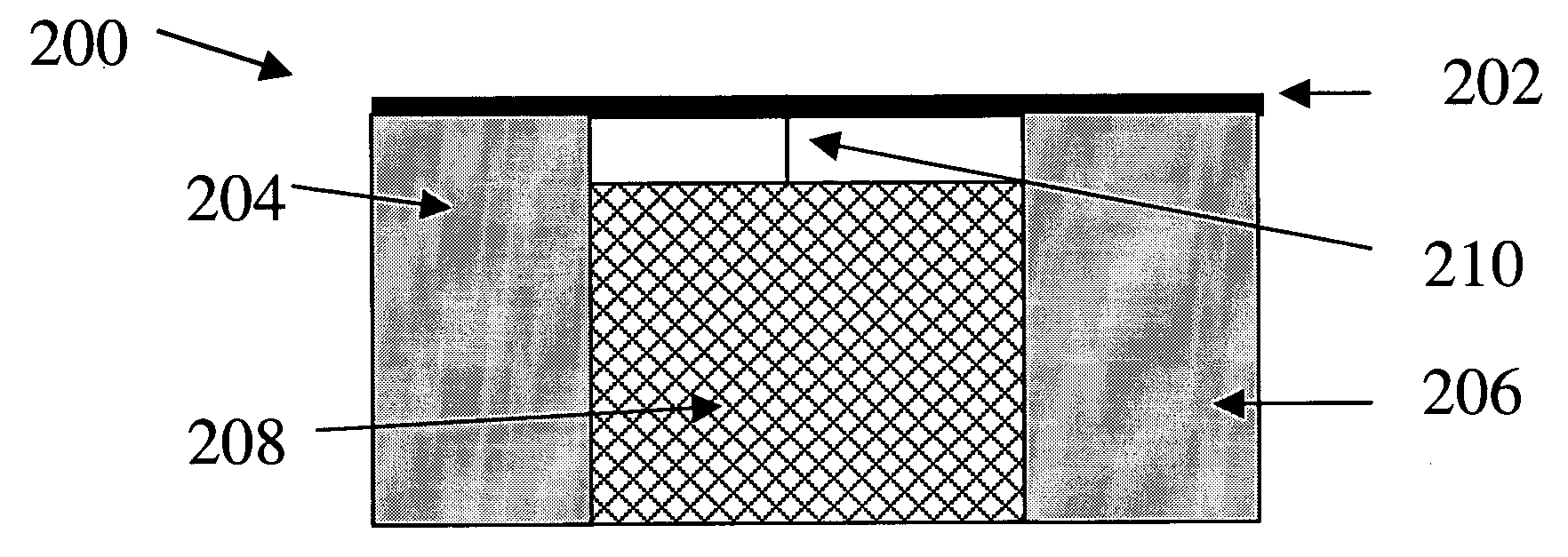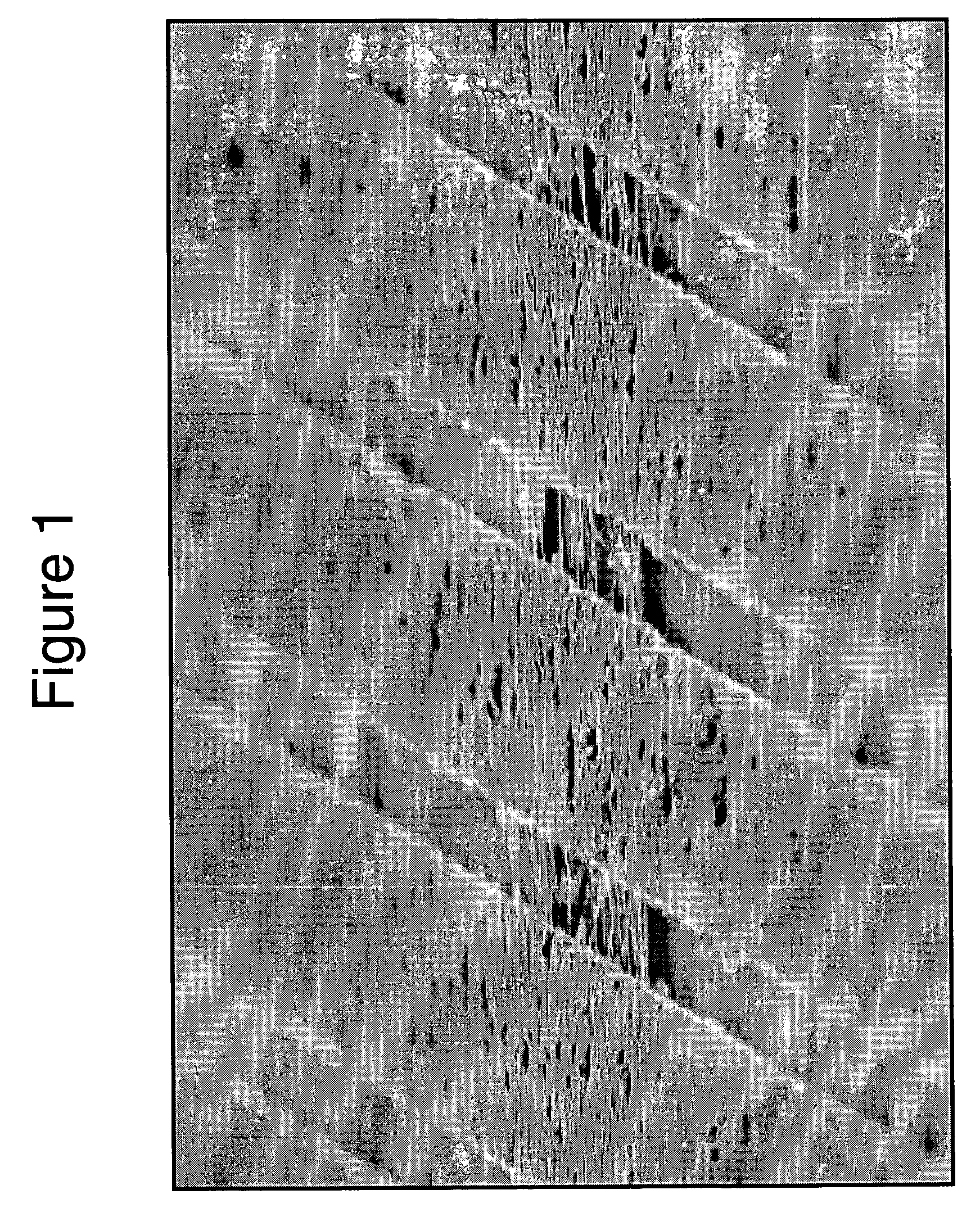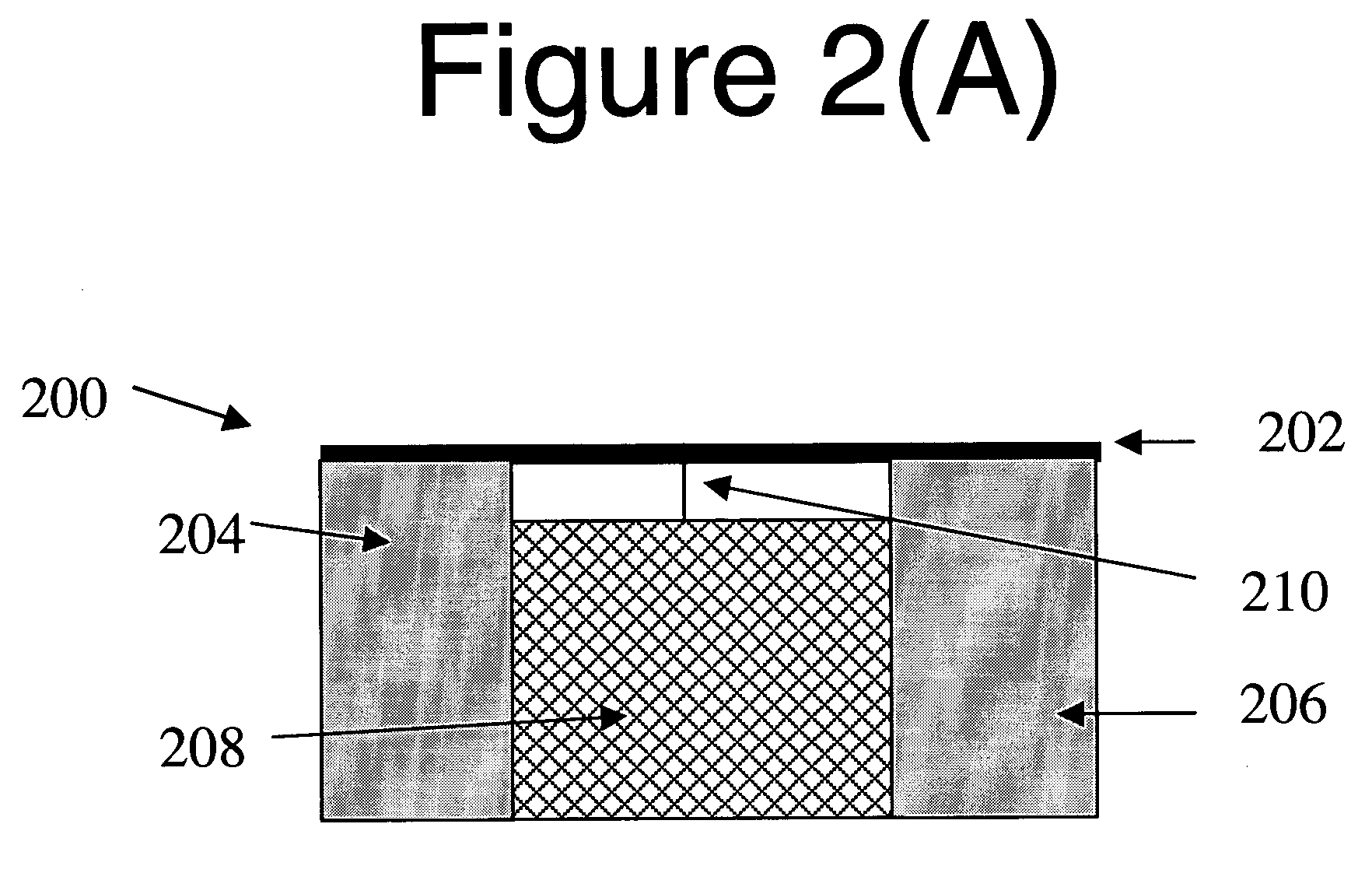Sensor platform using a horizontally oriented nanotube element
a nanotube element and sensor technology, applied in the direction of microstructured devices, instruments, material impedances, etc., can solve the problems of inability to reliably manufacture nanoscale sensors using individual nanotubes, difficult control of individual nanotube placement between electrodes, and inability to detect target analytes
- Summary
- Abstract
- Description
- Claims
- Application Information
AI Technical Summary
Benefits of technology
Problems solved by technology
Method used
Image
Examples
Embodiment Construction
[0074] Preferred embodiments of the invention provide a new platform or vehicle to be used in sensors and sensor arrays for biological and / or chemical sensing. They can be built using conventional semiconductor fabrication techniques and can leverage existing manufacturing infrastructure and processes to create sensors employing carbon nanotubes. The manufacturing techniques are largely compatible with CMOS processes and can be conducted at lower temperatures than those for making prior-art nanotube sensing structures. They allow fabrication of a massive number of sensors on a given chip or wafer that can be integrated with various forms of control and computational circuitry.
[0075] As will be described in more detail below, preferred embodiments of the invention use elements made from a fabric of nanotubes (“nanofabrics”), rather than using individual nanotubes as was suggested in prior art. These elements may be derivatized or functionalized as is taught in the art for individual...
PUM
| Property | Measurement | Unit |
|---|---|---|
| diameter | aaaaa | aaaaa |
| gap distance | aaaaa | aaaaa |
| width | aaaaa | aaaaa |
Abstract
Description
Claims
Application Information
 Login to View More
Login to View More - R&D
- Intellectual Property
- Life Sciences
- Materials
- Tech Scout
- Unparalleled Data Quality
- Higher Quality Content
- 60% Fewer Hallucinations
Browse by: Latest US Patents, China's latest patents, Technical Efficacy Thesaurus, Application Domain, Technology Topic, Popular Technical Reports.
© 2025 PatSnap. All rights reserved.Legal|Privacy policy|Modern Slavery Act Transparency Statement|Sitemap|About US| Contact US: help@patsnap.com



